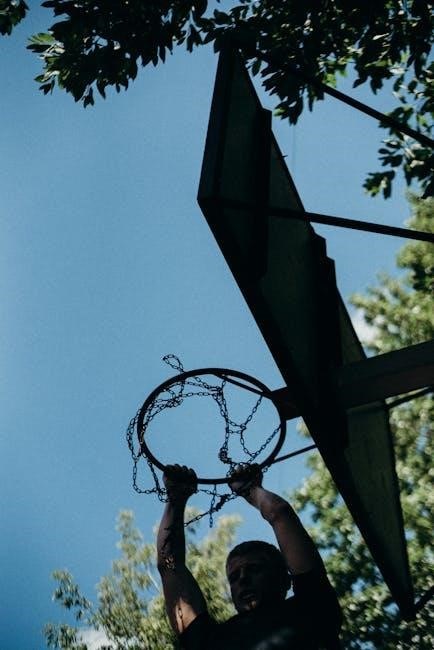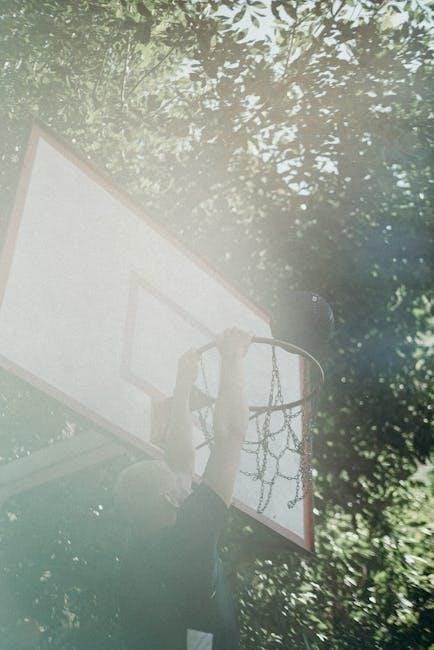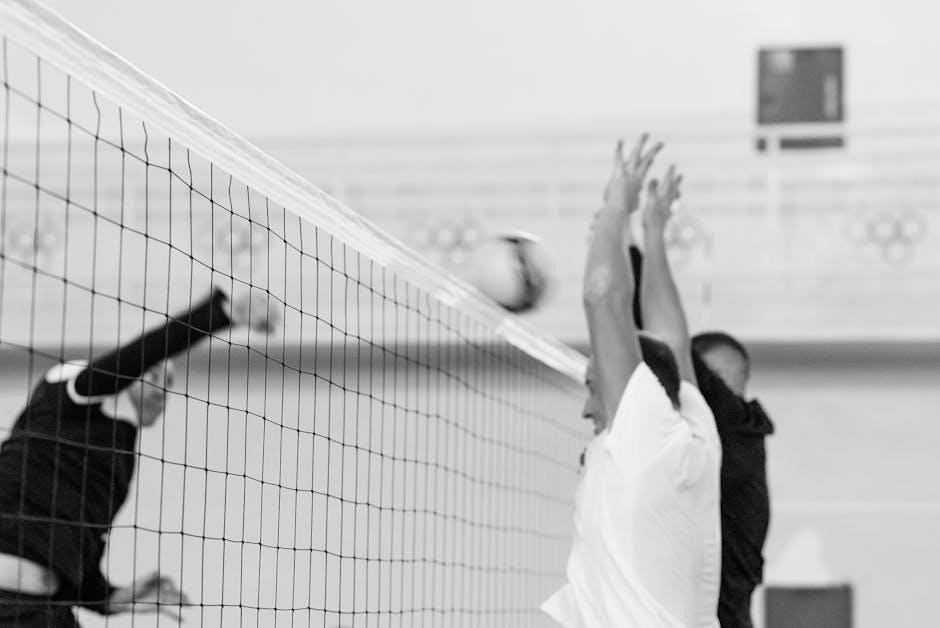Jump rings are essential components in jewelry making, serving as versatile connectors for linking charms, chains, and other elements. Available in various sizes and materials, they ensure durability and style.

What Are Jump Rings?
Jump rings are small, typically circular or oval-shaped metal loops used in jewelry making to connect components like charms, beads, or chains. They consist of an opening that allows them to link or unlink parts. Made from materials such as stainless steel, sterling silver, or gold, jump rings are essential for creating durable and visually appealing jewelry designs. Their versatility makes them a fundamental tool in various techniques, including chain maille, beading, and wire wrapping, ensuring secure and stylish connections.
The Importance of Jump Ring Size in Jewelry Making
The size of a jump ring significantly impacts the functionality and aesthetics of jewelry. Properly sized jump rings ensure a secure connection, preventing pieces from coming apart. Too small, and they may not fit through beads or chain links; too large, and they can appear bulky or insecure. The right size balances durability, visual appeal, and ease of use, making it crucial for achieving professional-looking results in jewelry projects. Accurate sizing ensures both strength and style, avoiding common pitfalls in design.

Understanding Jump Ring Sizes
Jump rings are measured by diameter and wire gauge, with sizes varying to suit different jewelry needs. Proper sizing ensures secure connections and balanced designs.
Standard Jump Ring Sizes: Diameter and Wire Gauge
Jump rings are typically measured by their inner diameter and wire gauge (thickness). Common diameters range from 2mm to 10mm, while wire gauges vary from 18g (thickest) to 24g (thinnest). The diameter determines the size of the opening, and the gauge affects durability; Thicker wires (lower gauges) are stronger but less flexible, making them ideal for heavy designs. Thinner wires (higher gauges) are easier to manipulate, suitable for delicate pieces. Choosing the right combination ensures functionality and aesthetic appeal.
- Diameter: Measured in millimeters, it dictates the ring’s opening size.
- Wire Gauge: Indicates thickness, influencing strength and flexibility.
Common Jump Ring Sizes for Different Jewelry Pieces
For delicate designs like earrings, smaller jump rings (2-4mm diameter, 22-24g) are ideal. Necklaces and bracelets often use medium sizes (4-6mm, 20-22g) for balance. Chunky or heavy pieces may require larger rings (6-8mm, 18-20g) for durability. Anklets and chain maille projects frequently use 5-7mm rings with a 19-20g gauge for strength and flexibility. Choosing the right size ensures both functionality and visual appeal, depending on the jewelry type and desired aesthetic.

How to Choose the Right Jump Ring Size
Consider the project’s requirements, use a size chart for accuracy, and test different sizes to ensure a proper fit and functionality for your jewelry design.
Factors to Consider When Selecting Jump Rings
When choosing jump rings, consider the project’s weight and stress, the type of jewelry piece, and the desired aesthetic. Durability, material strength, and compatibility with other components are crucial. Proper sizing ensures security and functionality, while the wire gauge affects the ring’s strength and ease of use. Testing different sizes and materials helps achieve the perfect balance for your design.
Using a Ring Size Chart for Accurate Measurements
A ring size chart is an invaluable tool for ensuring precise measurements. It helps determine the correct diameter and wire gauge for your jump rings, ensuring a secure fit and proper functionality. By comparing your rings to the chart, you can avoid guesswork and achieve professional results. Printable charts are widely available, making it easy to find the perfect size for bracelets, necklaces, or earrings. This method simplifies the process of selecting the ideal jump rings for your jewelry projects.
Materials and Their Impact on Jump Ring Size
Materials like stainless steel, gold, and silver vary in strength and flexibility, influencing jump ring durability and size. The choice of material affects both functionality and aesthetics.
Popular Metals for Jump Rings and Their Properties
Stainless steel jump rings are durable and resistant to corrosion, ideal for long-lasting jewelry. Gold (14k or 18k) offers a luxurious look and is highly malleable. Silver is affordable and modern but may tarnish. Brass and copper are cost-effective with a vintage appeal. Each metal’s strength and flexibility vary, impacting the jump ring’s performance and suitability for different designs. Choosing the right metal ensures both functionality and aesthetic appeal in jewelry making.
How Material Choice Affects Jump Ring Durability
The durability of jump rings heavily depends on the material used. Stainless steel and titanium offer exceptional strength and resistance to wear, making them ideal for heavy or long-term use. Gold and silver, while beautiful, are softer metals and may bend or wear down over time. Brass and copper are durable but can oxidize. Choosing the right material ensures your jump rings withstand daily use and maintain their structural integrity, crucial for professional jewelry designs.

A Step-by-Step Guide to Measuring Jump Rings
Accurate measurement ensures proper fit and functionality. Use calipers or a mandrel to determine diameter and wire gauge, ensuring secure connections in your jewelry designs.
Tools Needed for Measuring Jump Rings
To accurately measure jump rings, you’ll need specific tools. Calipers are ideal for determining both the inner and outer diameters, while a mandrel can help assess the ring’s roundness. A ruler or precision measuring tape can also be used for diameter checks. Additionally, a wire gauge tool is essential for measuring the thickness of the metal, ensuring compatibility with other jewelry components. These tools ensure precise measurements, which are crucial for selecting the right jump rings for your project.
- Calipers for diameter and thickness measurement
- Mandrel for assessing roundness and fit
- Wire gauge tool for metal thickness
- Ruler or measuring tape for diameter checks
How to Accurately Measure Jump Ring Diameter and Gauge
To measure a jump ring’s diameter, use calipers to determine the inner and outer dimensions. For gauge, measure the wire thickness using a wire gauge tool. Ensure the ring lies flat and is fully closed for accurate readings. Compare your measurements to a size chart to confirm compatibility with your project. Consistent and precise measurements are key to selecting the right jump rings for durability and proper fit in jewelry making.
Using Jump Rings in Jewelry Techniques
Jump rings are fundamental connectors in jewelry making, used to link beads, chains, and pendants. They add structural integrity and visual appeal to various designs, from chain maille to beading.
Jump Rings in Chain Maille and Weaving
Jump rings are indispensable in chain maille and weaving, forming the backbone of intricate designs. They interlock to create flexible yet sturdy patterns, with size and gauge crucial for structural integrity. Proper sizing ensures a seamless weave, preventing gaps or tight spots. Using the right jump rings enhances durability and aesthetic appeal, making them essential for crafting professional-looking chain maille jewelry.
How to Use Jump Rings in Beading and Wire Wrapping
Jump rings are versatile tools in beading and wire wrapping, connecting beads and components seamlessly. They allow for secure fastening without visible connections. In wire wrapping, they serve as attachment points for pendants or drops. Proper sizing ensures beads stay in place, while the right gauge prevents wire damage. Using jump rings enhances design flexibility, making them a must-have for creating intricate, professional-looking beaded and wire-wrapped jewelry pieces.
Where to Buy Jump Rings
Reputable online retailers like Amazon and Etsy offer a wide selection of jump rings in various sizes and materials. Local craft stores such as Hobby Lobby and specialty jewelry suppliers also carry high-quality options for both beginners and professionals.
Reputable Online Retailers for Jump Rings
Amazon, Etsy, and Rio Grande are top choices for purchasing jump rings online. Amazon offers a wide variety with fast shipping, while Etsy provides unique, handcrafted options. Rio Grande excels in wholesale and bulk orders, ideal for professionals. These platforms ensure competitive pricing, high-quality materials, and excellent customer service, making them trusted sources for jewelry makers seeking reliable jump rings in various sizes and gauges.
Local Craft Stores and Specialty Jewelry Suppliers
Visit Hobby Lobby, Michaels, or Jo-Ann Fabric and Craft Stores for a wide selection of jump rings. Specialty jewelry suppliers like Beadaholique and local bead shops offer high-quality options tailored to specific needs. These stores provide instant availability, expert advice, and the chance to see products firsthand. They often carry various sizes, materials, and finishes, ensuring you find the perfect fit for your project. Supporting local businesses also fosters community connections and personalized service.
Common Mistakes to Avoid
Common mistakes include choosing the wrong size or gauge, which can affect durability and fit. Always test sizes and consider the material’s strength to ensure longevity.
Choosing the Wrong Size or Gauge for Your Project
Choosing the wrong size or gauge for your project can lead to jewelry that is too tight, too loose, or prone to damage. A gauge that’s too thin may bend easily, while a size that’s too small can restrict movement. This can result in a piece that is uncomfortable or structurally unsound.
Always measure carefully and refer to a size chart to ensure accuracy. Selecting the appropriate gauge ensures durability and functionality, preventing common issues like breakage or poor fit. Proper sizing is crucial for both aesthetic appeal and long-term wearability.
How to Avoid Common Errors in Jump Ring Sizing
To avoid errors, use a ring size chart and measure at the right time of day. Factors like temperature can affect size, so consistency is key. Test sizes on different fingers and note comfort throughout the day for accuracy.
Selecting the right jump ring size is crucial for durability and aesthetics. Use a ring size chart, consider material strength, and measure accurately to ensure optimal results.
Key Takeaways for Selecting the Perfect Jump Ring Size
When choosing jump rings, accuracy is key. Measure both diameter and wire gauge carefully using a ring size chart. Consider the material’s strength and durability for your project. Test sizes on different fingers and note comfort. Opt for thicker gauges for heavier designs and thinner ones for delicate pieces. Always match the jump ring style to your jewelry’s aesthetic. Proper sizing ensures security, comfort, and a professional finish, making your jewelry stand out.
Final Tips for Working with Jump Rings
Always use high-quality jump rings to ensure longevity. Test sizes on multiple fingers and record how they feel throughout the day. Consider the wire gauge for durability, especially for heavy designs. Store unused rings separately to avoid tangling. Practice opening and closing techniques to maintain security without damaging the metal. Keep a variety of sizes and materials on hand for versatility in your projects. Proper care and selection will elevate your jewelry-making skills and result in professional-quality pieces.

Leave a Reply